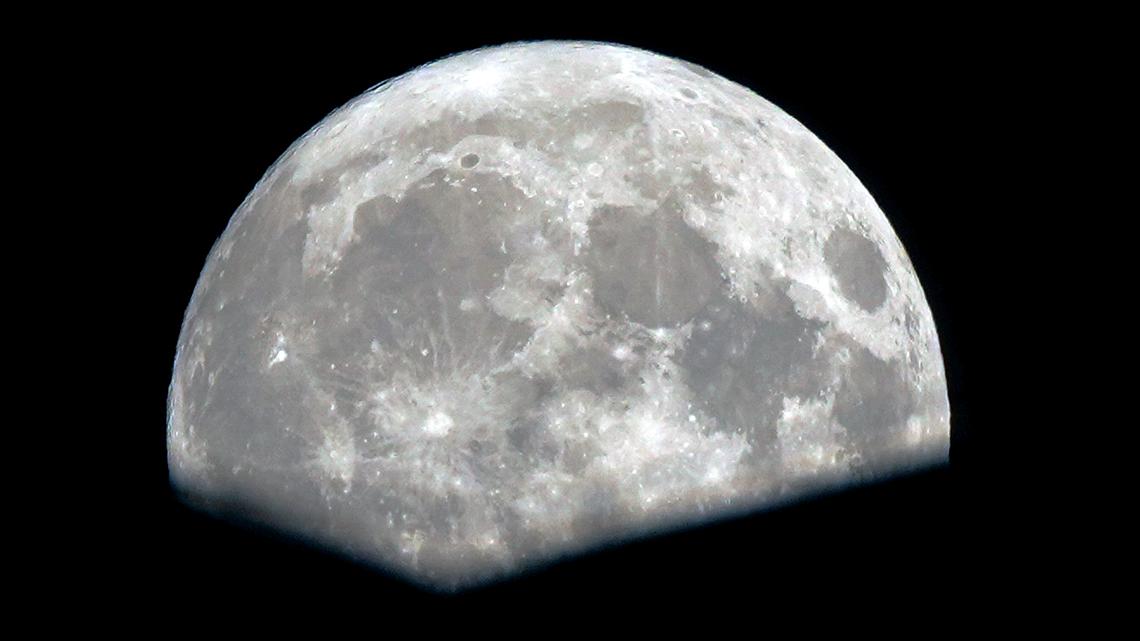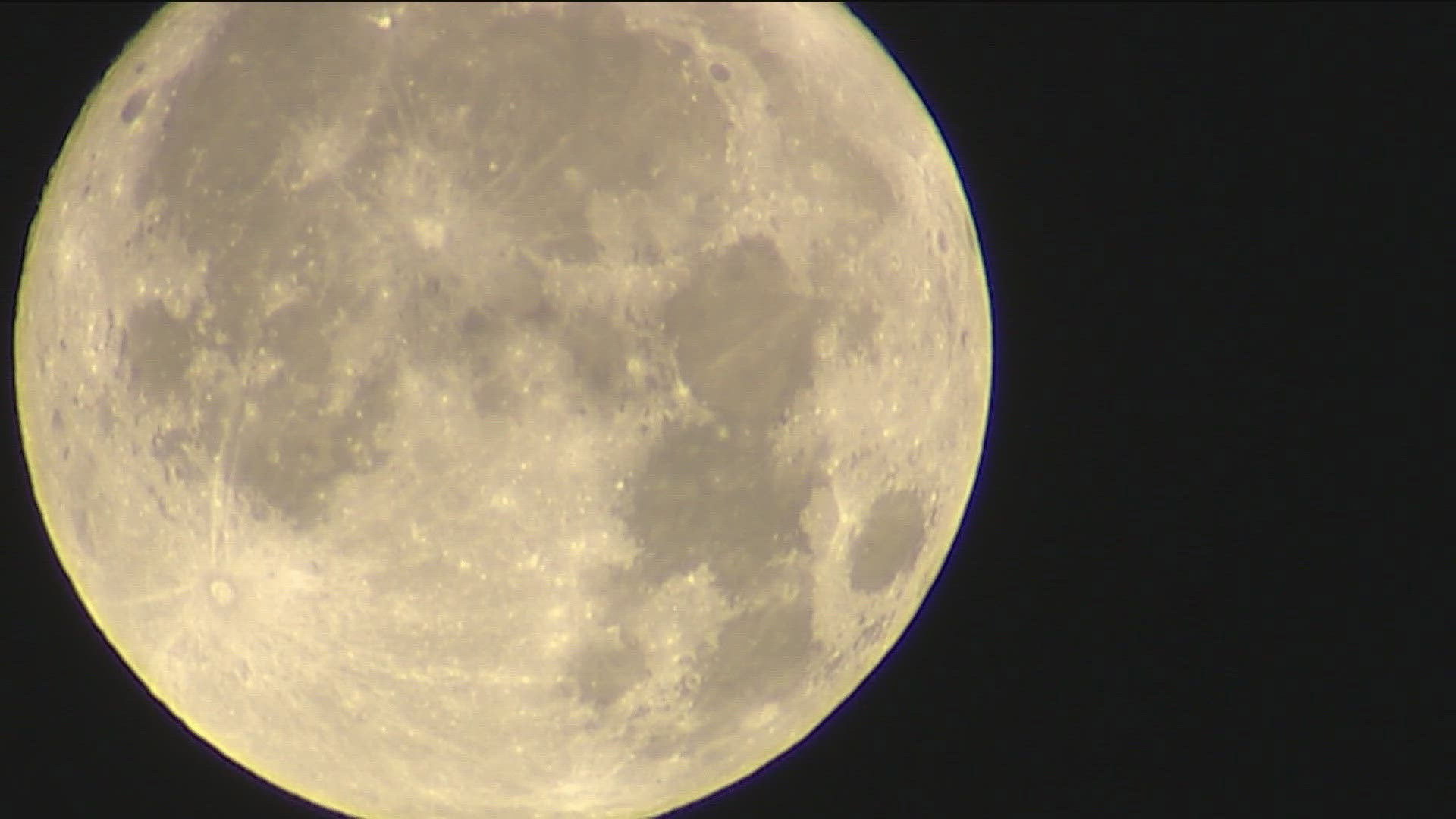WASHINGTON — Stargazers on Monday night will be treated to the sight of the first supermoon of 2024, one that is coincidentally, also a blue moon.
The nighttime spectacle will cause the moon to appear full for about three days, through Wednesday morning, before waning back to eventually a new moon.
Will the moon be blue tonight?
Despite the unique-sounding name, a blue moon isn't actually any more spectacular than any other full moon. Sorry to get your hopes up, but it won't be changing color.
A blue moon is just the name for a second full moon within a month, something that occasionally happens because the moon's 28-day cycle doesn't always sync up exactly with the 30 or 31-day calendar for most months.
However, there has been a number of times where volcano eruptions made the moon appear blue.
According to NASA, the newer definition for a blue moon was introduced by Sky & Telescope magazine in 1946 and means when there is a second full moon in a month. The more traditional definition is the name for the third full moon during a season that has four moons.
What is a supermoon?
More a popular term than a scientific one, a supermoon occurs when a full lunar phase syncs up with an especially close swing around Earth. This usually happens only three or four times a year and consecutively, given the moon’s constantly shifting, oval-shaped orbit.
A supermoon obviously isn’t bigger, but it can appear that way, although scientists say the difference can be barely perceptible.


“Unless you have looked at a lot of full moons or compare them in images, it is hard to notice the difference, but people should try,” Petro said in an email.
Scientists point out that only the keenest observers can discern the subtle differences. It's easier to detect the change in brightness — a supermoon can be 30% brighter than average.
How rare is it to have both a supermoon and a blue moon at the same time?
According to NASA, it's a statistical wonder that the two lunar events are coinciding.
A blue moon happens once every two or three years, on average. Supermoons are more common, occurring about three to four times per year as the earth's companion dips closer to the planet in its orbit.
Having them both occur at the same time? That only happens once every 10 to 20 years, according to NASA. It won't happen again until January 2037 — in about 13 years.
When is the blue supermoon?
According to NASA, the full moon will be Monday afternoon, Aug. 19, at 2:26 p.m. Eastern Time.

